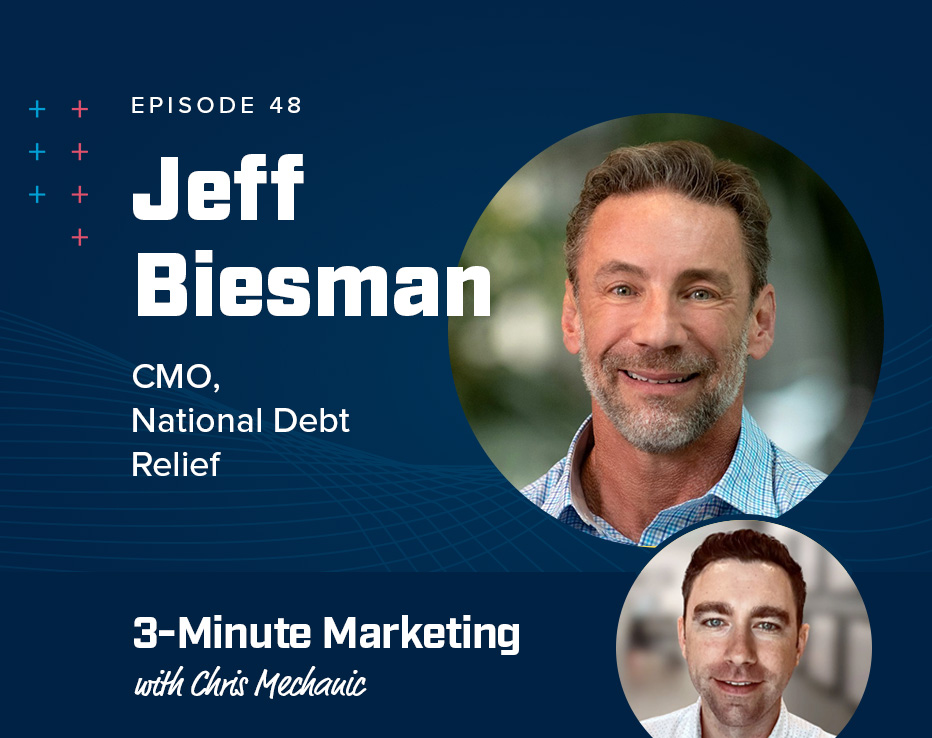
Marketing’s seat at the table
At most companies, marketing is a catch-all.
Sales teams constantly ask for new and interesting materials. Product hands marketers their roadmap and asks them to launch new features. The CEO tells the marketing team they need to switch messaging to go after a new vertical.
It feels like the demands never end.
But what if you flipped that on its head? What if you were the one coming up with plans and pitching them to leadership?
Book a 30 minute call
Reserve 30 minutes with a strategist and get 30 hours worth of value.
The good news: you can. And Esther Flammer, Chief Marketing Officer at Wrike is living proof.
Esther’s been widely recognized for her work, most recently winning “The Most Outstanding Woman in Business” award from Denver Business Journal. And she knows a thing or two about establishing marketing as a strategic priority, having built marketing departments at companies like Conga and ReturnPath from the ground up.
Read on to absorb some of her advice for marketers trying to uplevel their careers and vie for a seat at the table.
3 Ways to position marketing as a driver of company success
Positioning marketing as a key aspect of your organization’s strategy is critical to getting the recognition (and budget) your work deserves.
How do you do that? By showing that you:
- Recognize market trends
- Know what competitors are doing
- Know where industries are headed
- Are aware of macroeconomic trends
- Monitor changes in buying behavior
And tying those elements into a solid marketing strategy. But what does that mean in practice?
1. Understanding organizational priorities
The biggest piece of advice from Esther was to work on building trust by understanding what organizational priorities are, why they are the priorities, and how your team is contributing to them.
And by “understanding priorities,” Esther means really digging into the detail. What data and reasoning were driving leadership decisions? Why do they make sense for the business at this time?
With this framework in mind, ask how your work aligns to those priorities. Do the insights you’re collecting match leadership’s vision? On the other hand, maybe your data is telling you to move in the opposite direction.
But you can only express strong opinions when you can prove you’ve done the work to back them up. As you continue to develop stellar ideas and execute them, you naturally build your credibility and trust.
2. Taking a “yes, and” approach
Another important element to flipping the script is becoming known as a fantastic partner.
Marketing teams don’t always have a lot of bandwidth and tend to say no more often than other teams. But picking your battles wisely and thinking in terms of what is best for the business — not what’s best for you or your team — will help you establish yourself as a team player.
This is important because it reinforces the credibility you’re building. You’re listening to other people’s ideas, recognizing and acting on the important parts, and proposing new business cases based on the data you have, kind of like that central idea of improv, “yes and.”
At the same time, you’re building your personal brand. You’re known for generating ideas that move the business forward. Any marketer at any stage of their career should be doing this.
3. Being courageous
As Steve Jobs once said, “I don’t want to hire an expert and tell them what to do. I want to hire an expert to tell me what to do.”
Having the courage to offer a different perspective is hard. But it can pay to speak up when you’ve built enough trust and have confidence in your numbers. You were hired because of your talent and creativity, and using that to skillfully pivot an organization can give you major points with the leadership team.
Show them what you’ve got
Once you’ve established your team’s work as a strategic driver for the business, it’s time for the rubber to meet the road.
In this environment, the best way you can do that is to show you’re capable of not only executing your ideas, but doing it with fewer resources.
First, think about adopting a land and expand strategy
Esther describes Wrike as “the most powerful project management platform for teams, departments, and companies.” So to maximize her marketing strategy, she and the rest of the Wrike GTM team are focused on targeting specific teams with specific use cases.
Once they get those users into the tool, they’re hooked. And more importantly, they encourage all their team members to use it. And suddenly, the whole team becomes more collaborative and productive.
With those proof points in place, expanding into other departments is a breeze. Everyone else who uses Wrike starts improving their productivity and engagement KPIs as well, and before you know it, Wrike is being used throughout the entire company.
Using marketing to enable that kind of flywheel is smart and cost-effective. Explaining the product’s value and giving teams who use it a way to communicate that value to their bosses makes everyone a Wrike evangelist.
Then, look for efficiencies
What’s another way to fuel revenue growth?
Finding efficiencies. Esther recommends examining every single dollar you’re spending and confirming that you’re getting the maximum ROI. In other words, you’re capturing the highest LTV customers with the lowest CAC.
Knowing who your ideal customer is and where they hang out can help you increase your lifetime value and decrease your CAC. Even if this doesn’t generate immediate returns, it makes for much steadier growth in the long run.
Find ways to make your customers the hero
At Wrike, Esther and her team place a huge emphasis on the customer.
And that’s because they’re Wrike’s biggest champion. In many cases, Wrike has helped them progress in their role much faster than they could before.
Memorializing customers’ victories in the form of customer stories helps prospects see the potential of Wrike to transform their careers as well.
Drawing attention to your customers’ success can help you reel in more high-value leads, who may eventually become huge fans.
Try larger segmentation
You have different customers who need different kinds of support.
At Wrike, Esther and her team have created a leveling system for customer education.
As folks go through the onboarding process, they’re going through academy-style 101, 201, 301, and 401 courses that continue up-leveling their abilities over time.
So while Wrike users may start with simple task management, they work their way up to creating complex reports and dashboards. And eventually, users can start using Wrike to identify and fix broader problems that will help them scale their careers.
Producing fantastic content and delivering it to the person who needs it most can help you scale enablement and help users get as much value out of your product as possible.
Focus on target accounts
Esther organizes her team in a pod structure, using field marketers, field sales teams, and SDRs to hone in on target accounts.
These folks are trained in finding revenue potential. They see the white space. They know the next best department to go after. And they know what the department’s use case is.
Assembling these multi-pronged teams allows you to design highly personalized, multi-channel motion across sales, product, and marketing, helping you hit the right person with the right message at the right time.
Of course, this doesn’t always work out of the gates. Esther mentioned that she and her pod teams are constantly testing to see what works and what doesn’t, then iterating based on everyone’s feedback.
One last piece of advice
On your path to leadership, Esther noted that making time to connect with others is hugely important. You need exposure to different perspectives.
So organize those informal coffee chats. Meet with people in and outside of your company. They could be in different industries, be more junior or senior; it doesn’t matter. What’s important is taking stock of the life experience and recommendations they have to offer — you never know how they could help inform your strategy and help you along your journey.
Learn more about Esther’s ascent to the C-suite in her episode of the Performance Marketing Insiders podcast. And for more tips and tricks from digital marketing leaders like Esther, register for our next monthly Growth Clinic.
Most newsletters suck...
So while we technically have to call this a daily newsletter so people know what it is, it's anything but.
You won't find any 'industry standards' or 'guru best practices' here - only the real stuff that actually moves the needle.







